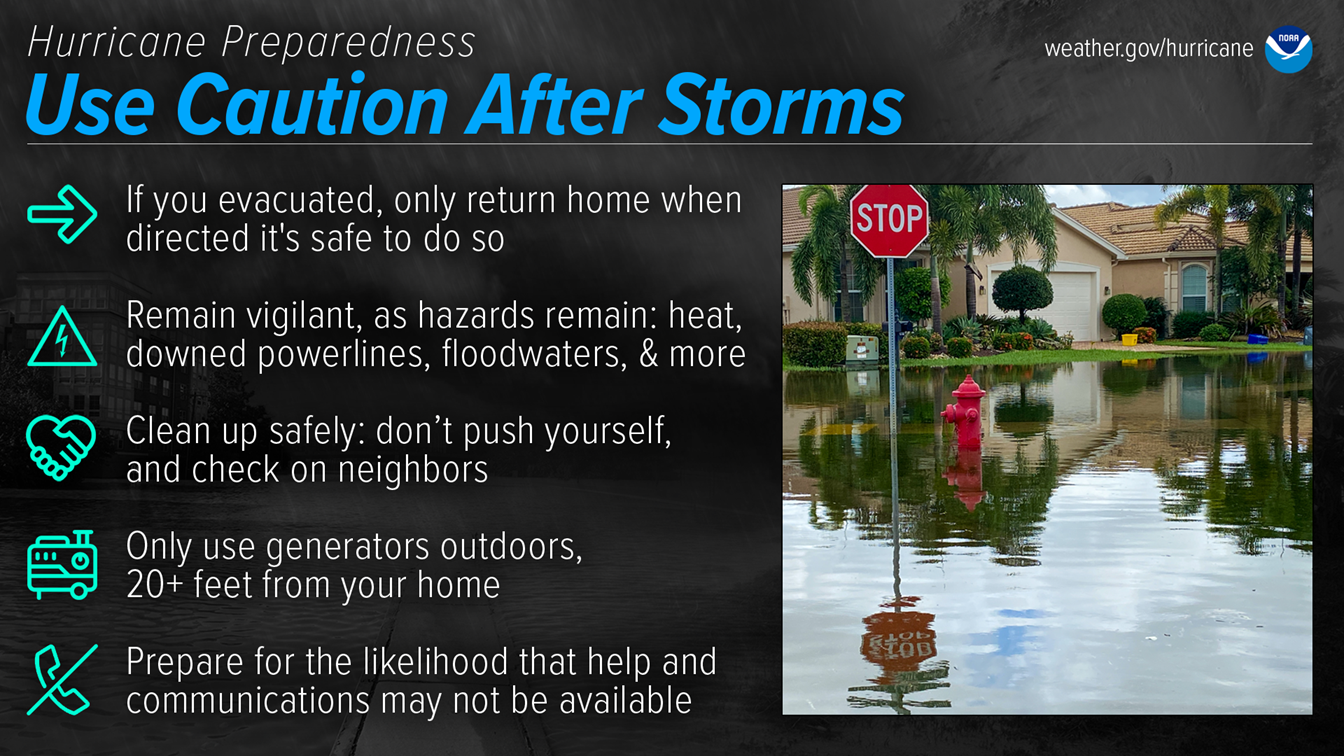Once the winds have calmed and the rain has subsided, the aftermath of a hurricane can be overwhelming. Returning home safely, dealing with damage, and accessing recovery resources are crucial steps to rebuilding your life after the storm. Here are some essential tips to guide you through the recovery process, based on recommendations from the Red Cross and FEMA.

Returning Home Safely
1. Wait for Official Clearance
- Tip: Do not return home until local authorities have declared it safe to do so. Pay attention to local news, emergency broadcasts, and official social media channels for updates.
- How-To: Use apps like FEMA’s mobile app or local government websites to receive real-time information about the safety of your area.
2. Assess Your Home’s Exterior First
- Tip: Before entering, inspect your home’s exterior for structural damage, downed power lines, gas leaks, and other hazards.
- How-To: If you see significant damage or suspect a gas leak, contact local utilities or emergency services before entering.
3. Enter with Caution
- Tip: Wear protective clothing, including long sleeves, gloves, and sturdy boots, when entering your home for the first time.
- How-To: Bring a flashlight to check for hazards inside the home, and avoid using open flames as there may be gas leaks.
Dealing with Damage
1. Document the Damage
- Tip: Take photographs and videos of all damage for insurance claims. Document both the exterior and interior of your home.
- How-To: Make a detailed inventory of damaged items, including descriptions and estimated values.
2. Prevent Further Damage
- Tip: If possible, make temporary repairs to prevent further damage. Cover broken windows with plywood, and use tarps to cover roof damage.
- How-To: Save all receipts for materials and labor, as these expenses may be reimbursed by your insurance company.
3. Contact Your Insurance Company
- Tip: Notify your insurance company as soon as possible to start the claims process. Provide them with the documentation of the damage.
- How-To: Keep a record of all communications with your insurance company, including dates, times, and the names of representatives you speak with.
Accessing Resources for Recovery
1. Apply for Disaster Assistance
- Tip: FEMA offers various forms of disaster assistance, including grants for temporary housing, home repairs, and other critical needs.
- How-To: Visit FEMA’s Disaster Assistance website or call 1-800-621-FEMA to apply for aid. Have your identification, insurance information, and documentation of the damage ready.
2. Utilize Local Resources
- Tip: Many local organizations and community groups offer support during the recovery phase. This can include food, clothing, and shelter.
- How-To: Contact your local Red Cross chapter or community centers for information on available resources. Check local news and social media for updates on relief efforts.
3. Seek Emotional Support
- Tip: The stress and trauma of experiencing a hurricane can take a toll on mental health. Seek support from counselors or support groups if needed.
- How-To: The Red Cross and other organizations provide crisis counseling and support services. Contact them for more information on available resources.
Health and Safety Precautions
1. Avoid Floodwaters
- Tip: Floodwaters can contain dangerous contaminants, debris, and hidden hazards. Avoid contact with floodwaters whenever possible.
- How-To: If you must walk through floodwater, use waterproof boots and clean any exposed skin with soap and clean water as soon as possible.
2. Prevent Mold Growth
- Tip: Mold can develop within 24 to 48 hours in damp areas. Dry out your home as quickly as possible to prevent mold growth.
- How-To: Use fans, dehumidifiers, and open windows to increase airflow. Remove wet carpets and furniture to allow the floors to dry.
3. Practice Generator Safety
- Tip: If using a generator, ensure it is placed outside and away from windows, doors, and vents to prevent carbon monoxide poisoning.
- How-To: Follow the manufacturer’s instructions and never run a generator inside your home or garage.
Recovering from a hurricane can be a daunting process, but by following these steps, you can ensure a safer and more efficient recovery for you and your family. Stay informed, take necessary precautions, and utilize available resources to rebuild your life after the storm.
For more detailed information and resources, visit the Red Cross and FEMA. Stay safe and stay resilient, Texas Forest Country.



